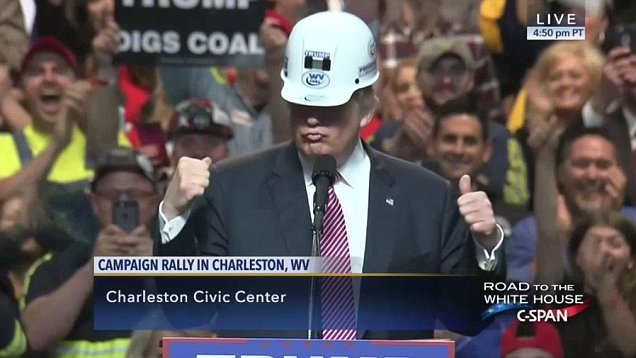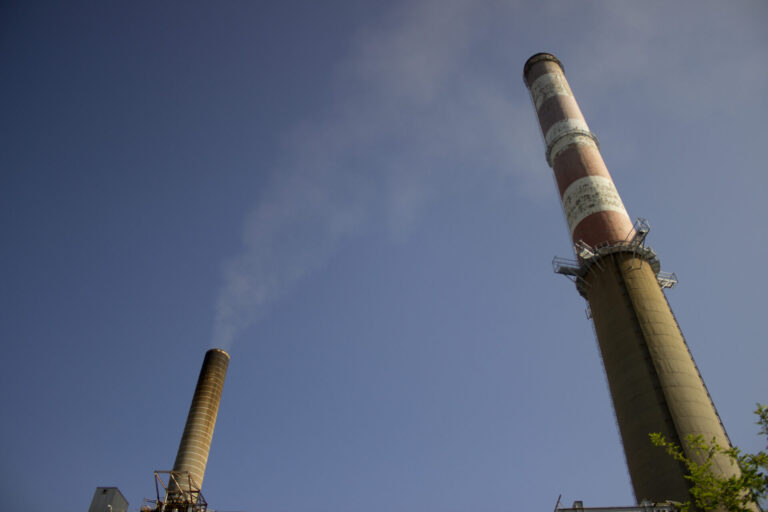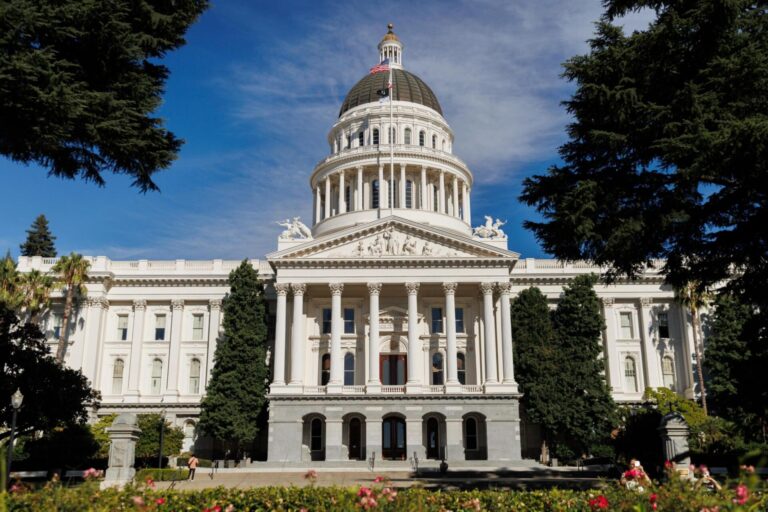The Trump Administration continues to aid the coal industry in the U.S. and abroad as climate talks continue in Poland

The Trump Administration is in Poland for the COP24 United Nations climate talks this month and is set to hold a side-event to promote coal and other fossil fuels. The UN Intergovernmental Panel on Climate Change declared in its October report that coal must be almost entirely phased out by mid-century to help keep average global temperatures from cresting over the 1.5 degrees Celsius mark. Regardless, the Trump administration has found a variety of ways over the past two years to aid the U.S. coal industry. Here is brief roundup:
Trump weakens environmental and health protections
In August of this year, Trump’s Environmental Protection Agency (EPA) announced a replacement for President Obama’s Clean Power Plan. The Trump plan, called the Affordable Clean Energy rule (ACE), would allow coal-burning utilities to continue operating coal plants longer than they would have under Obama’s plan since Trump’s contains no limits on the amount of climate pollution.
Additionally, Trump’s ACE rule allows coal-burning utilities to escape a permitting process under the New Source Review program if it upgrades a coal unit.
Audio obtained by the Energy and Policy Institute from an event held in Washington D.C. in October shows the mindset of the administration when it comes to repealing Obama-era climate rules in an attempt to help the coal industry.
Speaking at a Carbon Utilization Research Council event on October 4, Department of Energy Assistant Secretary for Fossil Energy Steve Winberg – who is scheduled to speak at the side-event at COP24 in Poland – told the room full of policymakers and representatives from coal companies and utilities that the administration was working on a variety of methods to boost the mining and burning of coal:
The idea that we can take coal out of the mix is simply unrealistic. The fact is coal is facing challenges, we’ve already heard about that this morning. And folks, there is no single silver bullet that will get us to where we need to be, and get coal back to where it was 10 or 20 years ago.
To get there, to keep coal in the mix, requires a broad approach that includes technology, it includes policy, and it includes regulatory solutions that when you add them up – when you pull them all together – puts coal on a much stronger footing than it is on today. And that is the goal. That is what we need to do to keep coal in the all-the-above energy mix.
So the administration took an important step in this direction recently when the EPA rolled-out the Affordable Clean Energy Rule or ACE … so ACE replaces the Clean Power Plan. At the same time, there are other actions that could be taken to help strengthen coal. Some can happen at the state level, some of them require federal action. For instance, we need to reform New Source Review. There’s been some progress here on the pre-construction permitting requirement and reclassifying major sources as area sources under the Clean Air Act, but more needs to be done to provide clarity and certainty and reduce regulatory burdens on operators.
The rollback of the Clean Power Plan is not all that Trump has done. In the early weeks of his presidency, Trump signed a bill that repealed the Stream Protection Rule, which had restricted the dumping of mining waste into streams and waters. The action left waters unprotected from coal mining companies. Soon after that rollback, the president issued an executive order on March 28, 2017, that ordered the Department of Interior (DOI) to lift the ban on new coal leasing on federal law. Secretary of the Interior Zinke soon re-opened up tens of thousands of acres of federal lands to new coal leases.
That same month, Murray Energy’s CEO Robert Murray gave Trump and other administration officials more action items he wanted them to accomplish. A review of the some of the items Murray wanted accomplished shows just how much Trump has embraced the coal CEO’s list.
Trump and Zinke have also shrunk the Bears Ears and Grand Staircase-Escalante National Monuments in Utah. Emails obtained by The New York Times show that fossil fuel resources played a significant role in the changing of the boundaries. For instance, an internal memo details how the Kaiparowits Plateau, a remote region within the heart of the former Grand Staircase-Escalante boundaries, holds one of the largest coal deposits – more than 11 billion tons that are “technologically recoverable.”
Beyond potential exploration, the Interior has tried to propel existing claims into production. Emails obtained by the Guardian and the watchdog groups Documented and the Western Values Project detail how DOI political appointee Vincent DeVito, a former co-chair of Trump’s presidential campaign in Massachusetts, helped advance Ramaco Resources’ Berwind mine’s endangered species protection plan, despite the plan being deeply flawed. DeVito proudly reflected to attendees at a Americans for Prosperity conference, “if I go out to West Virginia and I rescue a coal project from bureaucratic entanglement, and then you see two days later the company in the field with guys going back to work, that is pretty rewarding.”
And most recently, the EPA again changed an Obama rule dealing with coal plants. On December 6, 2018, acting EPA administrator Andrew Wheeler – a former coal lobbyist – signed a proposal to increase the amount of pounds of carbon dioxide per megawatt-hour new coal plants can emit. Obama’s rule, known as the New Source Performance Standards, established the limit of 1,400 pounds of CO2 per MWh for new coal plants. The Trump administration’s proposal increases the limit to 1,900.
Trump tries to subsidize uneconomic coal power plants
While Trump has directed the EPA and DOI to help coal companies, his Department of Energy (DOE) has also been busy finding ways to aid the industry. Most notably is their repeated attempts to find a legal path to get ratepayers to subsidize coal and nuclear power plants.
In August 2017, Politico reported that Trump’s former campaign manager Corey Lewandowski pressed the president to support a joint proposal from Murray Energy and utility company FirstEnergy to get federal subsidies for the utility’s coal plants burning coal from Murray Energy mines. Letters from Bob Murray to the administration reveal that after Trump met with him and FirstEnergy CEO Charles Jones, Trump turned to then-personal aid John McEntee and said, “tell Cohn [Gary Cohn, director of the White House’s National Economic Council] to do whatever these two want him to do.”
Documents obtained by the Energy and Policy Institute with the assistance from Earthjustice earlier this year further show the coziness between the administration and individuals pushing for coal subsidies. Communications between FirstEnergy executives, Bob Murray and DOE officials reference language and suggested action plans that found their way into various iterations of DOE proposals aimed at bailing out uneconomic coal plants and nuclear plants.
Analysis of flight data also obtained by the Energy and Policy Institute detailed a sharp increase in the number of flights to D.C. made by two corporate airplanes owned by FirstEnergy subsidiaries since the week of President Trump’s inauguration. The two FirstEnergy aircraft traveled to the nation’s capital just four times in 2016, but made thirty-one trips to D.C. between January 17, 2017, and April 3, 2018.
In October 2017, Energy Secretary Rick Perry proposed a plan to the Federal Energy Regulatory Commission (FERC) to force utilities in certain regions of the country to pay the full cost of power to plants that have 90 days’ worth of fuel on-site (most coal and nuclear plants, including FirstEnergy units). Months later, FERC unanimously rejected Perry’s proposal.
FERC’s rejection hasn’t stopped the administration from continuing to think of ways to prop up the coal industry.
In May 2018, a leaked memo surfaced that detailed that Trump administration officials were considering invoking a wartime law to keep uneconomic coal and nuclear power plants online. Bloomberg reported that the administration was considering using the Defense Production Act and another law, the Federal Power Act, to keep certain coal and nuclear facilities open. In October, Politico reported that the White House had shelved this plan; however, sources told the outlet that since Trump frequently changes his mind the plan could re-emerge in advance of the 2020 reelection campaign.
Moreover, Zinke said officials are also looking at military bases as avenues to export coal and circumvent bans that have been put in place along the West coast to restrict the transportation and exporting of coal.
Image: Trump at a Charleston Rally (CSPAN)



